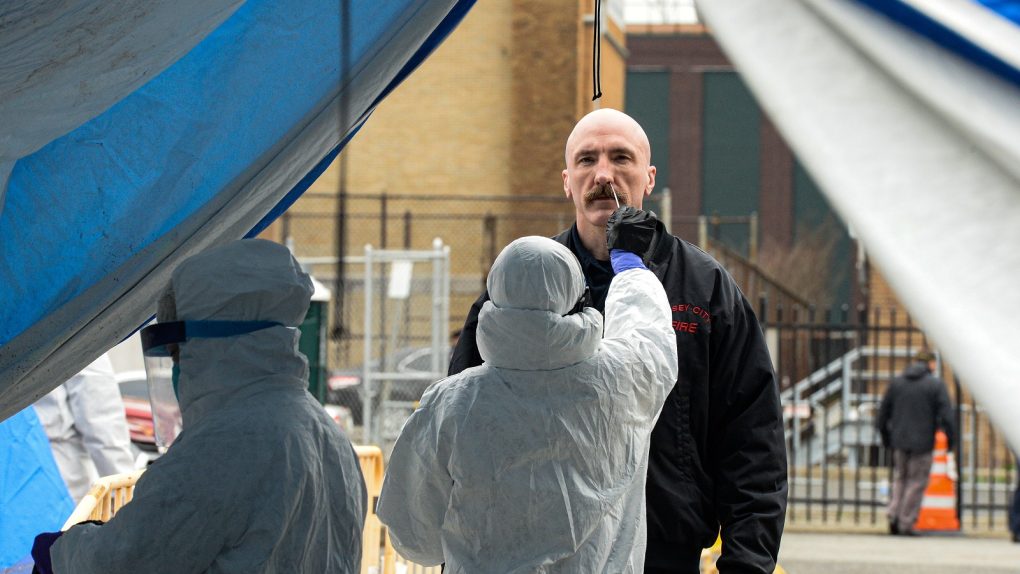- A new coronavirus study shows that some of the most widely used COVID-19 screening methods do not catch all coronavirus infections.
- Fever and symptom checks are routinely used in public places, but they fail to identify all people who are infected with COVID-19. That’s because many people are asymptomatic or presymptomatic when screened, but they can still be contagious.
- The study shows that the only useful screening tool is COVID-19 testing, which can actually provide a correct diagnosis.
A combination of factors turned the novel coronavirus into the worst virus the world has seen since the Spanish flu. SARS-CoV-2 isn’t lethal for most people and new therapies allow doctors to save even more lives than in the early months of the pandemic. Doctors are also looking to understand better the “long COVID” syndromes that some patients experience after clearing the virus.
What makes the virus so dangerous is the way it infects people. The incubation period can last anywhere from two to 14 days, and not all the people who get infected have symptoms. Those who do experience symptoms are already infectious a few days before the first signs arrive. And when the symptoms finally present themselves, they aren’t unique. You might confuse COVID-19 with a common cold, the flu, or other medical conditions. The loss of smell and taste usually points to a COVID-19 infection, but not everyone experiences that symptom. In other words, there’s no easy way to diagnose COVID-19 and prevent the spread — and a new study has proven that only one type of screening will catch most infected people.
Today’s Best Deal

You’ve gotten used to fever checks everywhere you go by now, and some places might be screening for other COVID-19 symptoms as well. But a new research paper tells us what we’ve known for months. Checking for a fever or asking about symptoms isn’t enough to catch infected people. Many people with COVID-19 will pass those screening tests with ease, either because they’re true asymptomatic patients or because they’re presymptomatic, which means they will eventually get some symptoms.
Published in The New England Journal of Medicine (NEMJ), the study is one of the best of its kind for the simple fact that it involves the military, a place where the volunteers can’t do anything but comply with rules and orders.
Researchers from the Icahn School of Medicine at Mount Sinai in New York and the Naval Medical Research Center studied 1,848 Marine recruits, 90% of them men. They were told to isolate at home for two weeks, and then they went to a supervised military quarantine at a closed college campus for two more weeks. The rules at the campus were stringent. Each recruit had just one roommate. They wore masks, respected social distancing, and trained mostly outside. They received daily temperature and symptom checks during the period.
The recruits got COVID-19 tests when they arrived at the college, and then again on days 7 and 14. Only 16% of the recruits tested positive on arrival, or about 1% of them. But 35 then tested positive during the two-week military quarantine. Of those, only four people had symptoms.
Only recruits who tested negative at the end of the month-long quarantine were then allowed to proceed to Parris Island for basic training. The research proves that fever and symptom screening will miss many COVID-19 cases, and that PCR testing is the only method that really works.
“We spent a lot of time putting measures like that in place, and they’re probably not worth the time as we had hoped,” Emory University public health researchers Jodie Guest, who wasn’t a part of the study, told AP. “Routine testing seems to be better in this age group,” she said, referring to young adults who often have no symptoms.
The NEJM study has implications for public COVID-19 screening campaigns that rely on temperature and symptom checks. Whether they happen at schools, stores, or other places where large groups of people can gather, temperature checks won’t do much to find all SARS-CoV-2 carriers. A different screening project showed that US airports caught fewer than 15 cases out of 675,000 people with temperature and symptoms checks. That study had no information on the number of missed cases since the only way to know would’ve been to test all of those travelers.
The AP report details a second NEJM study involving COVID-19 and the military that yielded similar results. After a COVID-19 outbreak emerged on the USS Theodore Roosevelt, 1,271 people tested positive from the ship’s crew of 4,779. Most of the crew was young. Of the people who were coronavirus-positive, 77% did not have symptoms when diagnosed, while 55% never got any symptoms at all.








